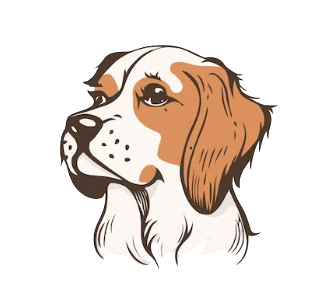Summary:
- Health: Do Chihuahuas Get Sick? How Long Does a Chihuahua Live?
- What and how much does a Chihuahua eat?
- Historical Notes on Chihuahuas
1- Chihuahua Dog Breeding
The Chihuahua (from Spanish: Chihuahueño ) is a Mexican breed of toy dog . It takes its name from the Mexican state of Chihuahua and is among the smallest dog breeds in the world. It is usually used as a companion animal or as a show dog.
Breed Overview
- Chihuahuas are the smallest breed recognized by numerous kennel clubs.
Physical Characteristics
- Current standards set by official registries specify that Chihuahuas must have an “apple-head” or “apple-dome” skull conformation.
- Chihuahuas come in any color combination, solid or spotted.
- Apple-domes have large, round eyes and large, erect ears; the skull is always rounded.
- The stop is well defined and forms an angle of almost 90 degrees at the point of insertion of the muzzle.
Head Types
- Dogs of the older type, called “deer” (deer head), have a flat head, eyes more widely spaced, larger ears, and longer, thinner legs; they can still be registered but cannot compete aesthetically with the more recently selected ones.
Size and Weight
- The breed standards for this dog do not specify height; although, generally, it varies between 15 and 23 cm (rarely reaching 30–38 cm).
- Both the British and American breed standards state that the Chihuahua should weigh 2.7 kg or less.
- The British standard specifies that a weight of 1.8–2.7 kg would be preferable.
- The Fédération Cynologique Internationale standard ideally calls for dogs weighing between 1.5 and 3.0 kg, although smaller ones are commonly acceptable.
- Pet (non-show) Chihuahuas often exceed this weight limit, even by a lot, if they have large bone structures or are overweight. This does not mean, however, that they are not purebred; they simply do not meet the requirements for competition. Oversized Chihuahuas are seen in both the best and worst bloodlines.
Breeding Practices
- Chihuahuas are not bred for size, as in the same litter, there can be dramatically different sizes of puppies.
- Additionally, larger breeding females are less likely to experience dystocia (difficult labor).
- Many breeders try to breed the smallest Chihuahuas possible (called “teacup” or “tiny teacup”), because they are much more expensive.
Coat Patterns and Health
- The Fédération Cynologique Internationale, which represents the major kennel clubs of 84 countries, no longer recognizes the “blotched” coat pattern due to the increased health risks it poses in Chihuahuas.
Temperament
- Like many other small dogs, the Chihuahua can show above-average aggression towards people and other dogs.
2- Health: Do Chihuahuas Get Sick? How Long Does a Chihuahua Live?
Genetic Predispositions
Neurological Diseases
- Atlantoaxial instability
- Ceroid lipofuscinosis
- Congenital deafness
- Congenital hydrocephalus
- Muscular dystrophy
- Necrotizing meningoencephalitis
- Neuroaxonal dystrophy
Congenital Heart Disease
Health Studies
Periodontal Disease
- 2001 Radiographic Study
- Lowest incidence of periodontal disease among six breeds
Medial Patellar Dislocation
- Considered significant predisposition
Dystocia
- Female Chihuahuas 10.4 times more likely to suffer
Life Expectancy
- Japanese Study: Average life expectancy of less than 12 years
- British Study: Average life expectancy of less than 8 years
4-What and how much does a Chihuahua eat?
- Buttermilk Pancakes – Available with Strawberry, Cherry, Blueberry, or Apple topping.
- Short Stack – An order of two large, fluffy pancakes, available with fruit, nuts, or chocolate topping.
- Malted Waffle – A large Belgian waffle made with malted batter.
- French Toast – Three slices of Texas toast dipped in a creamy batter.
A weekly cocktail party adds spice to the experience. Relaxing. At the resort’s Ginger Lily Spa, “our mission is to help you relax,” says Kamarla Simms, general manager. Curate your experience from a menu of wraps, scrubs, massages, and facial treatments designed to help you unwind and rejuvenate. A full-service beauty salon is available, along with manicure and pedicure services.
5- Historical Notes on Chihuahuas
Feeding Small Breeds
Feeding Frequency and Timing for Very Small Breeds
- Very small breeds like Chihuahuas do well with small, frequent meals, rather than large, spaced-out meals. The exact timing and frequency depends largely on age:
Puppies Up to 3 Months or Under 1 kg
- For puppies up to 3 months, or under 1 kg, feeding should be managed based on the animal’s needs. The animal must be able to access meals 24 hours a day. Food should be refreshed several times a day, so that it does not become dry or stale.
Chihuahuas 3 Months and Older or Weighing More than 1 kg
- All Chihuahua puppies and adults, 3 months and older, or weighing more than 1 kg, should eat 3 meals a day, with some snacks in between.
Caloric Needs
- The right amount of food to give a Chihuahua depends on the individual’s caloric needs. This can vary greatly and fluctuate, depending on the dog’s activity level, exact age, health status, and even the weather (dogs tend to eat more in the winter).
- In general, the caloric requirement for puppies is around 100 kilocalories per kilogram of body weight, and for adult Chihuahuas, it is between 70 and 80 kilocalories per kilogram of body weight.
Portion Sizes
- The right portion also varies depending on the type of food provided (wet or dry, chicken or beef, high quality or mediocre, etc.).
- Chihuahuas between 2 and 5 kilos will eat approximately 80 – 120 g per day (divided into meals, of course).
6- Bibliography
Academic Journal Articles
- Ní Leathlobhair, Máire; et al. (July 6, 2018). “The evolutionary history of dogs in the Americas”. Science. 361 (6397): 81–85. Bibcode:2018Sci…361…81N. doi:10.1126/science.aao4776. PMC 7116273. PMID 29976825. S2CID 206663458.
- Bergström, Anders; et al. (2020). “Origins and genetic legacy of prehistoric dogs”. Science. 370 (6516): 557–564. doi:10.1126/science.aba9572. PMC 7116352. PMID 33122379. S2CID 225956269.
Historical Writings and Records
- Pedro Baptista Pino and Juan Lopez Cancelada, Brief and simple exposition of the Province of New Mexico and other writings. Ed. Jesus Paniagua Perez. Valladolid: Junta de Castilla / León: Universidad de León, 2007, p. 244: “even in the desert the tiny dogs could be found, hunting rats, mice, and lizards.” The footnote that follows alludes to starving Conquistadores reportedly hunting and stealing the dogs (Universidad Veracruzana, Arquivo Viejo, XXVI.2711).
- “Hernan Cortés: from Second Letter to Charles V, 1520”. Fordham University. Archived from the original on August 23, 2014. Retrieved March 25, 2014.
Books and Publications
- Coile, C. (2013). Chihuahuas: Everything about purchase, care, nutrition, behavior, and training. Hauppauge, NY: Barron’s Educational Series, p. 7: “Only in 1904 did the American Kennel Club (AKC) register its first Chihuahua; a total of five were registered that year.”
- “Chihuahua History: From Aztec Treasure to Popular Companion.” American Kennel Club. January 6, 2022. Retrieved September 28, 2022.







